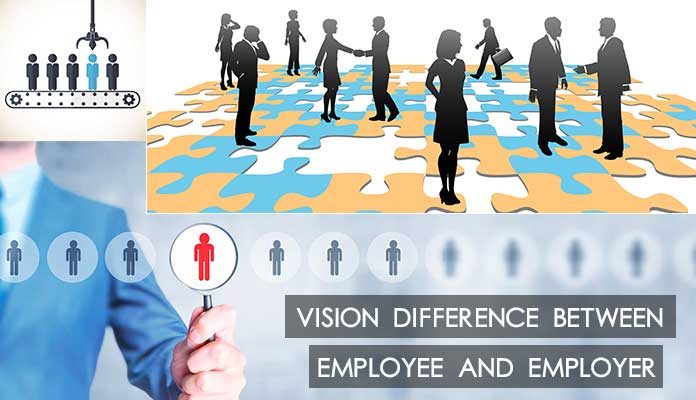The general difference between employer and employee is distinct and doesn’t need any definition. One thing which is crucial and needs attention from policymakers, corporates, workforce, and talent is the vision difference. Knowledge about the underlying approach between an employer and employee is way too essential for achieving the common objective of an organization.
Getting into minds of employers and employees helps in achieving the maximum productivity of an organization.
Here is an insight into what constitutes the vision difference between employer and employee, and how it creates a gap in achieving the objectives.
Difference of between Employer and Employee
In simple words, the employer is an individual who hires an employee to get a task done. So, the employer pays compensation in return of the employee’s labor. This difference in fundamental roles leads to deduction of following points.
- Employer eyes at some significant goals, for which he has hired an employee
- For an employee, his task is just a job that financially supports him.
- The employer also looks to enhance financial wealth and productivity.
- For an employee, a loyalty to the employer is necessary as stated or expressed regarding contract.
- An employer may have other goals, apart from meeting the financial objectives. So, the stakes of employers are high.
- An employer is also responsible for any loss that employee bears in the course of meeting his duties for an employer.
Such a difference also results in major challenges that companies face in outsourcing the work.

Difference in Leadership Roles
There is another difference between employer and employee; former is most of the times a leader, while later is a follower. But here this relationship is not established on the traditional norms. In this situation, an employee is duty bound to follow an employer, because he has to earn the salary. He doesn’t follow his employer out of some passion or by seeing him as a role model. Such compulsion is also because not all the employers are good leaders. Hence, they end up attracting a force, looking for the job to meet financial needs. They don’t hire passionate talent who is looking to fulfill his aspirations by helping organizer meet his goals.
Consequently, employers and employees end up working in a space powered by the vision difference by clear goals. Such a difference can also give rise to lack of coordination that leads to reduced productivity.
Necessity of Bridging this Vision Difference
Vision difference between employer and employee can be the driver of growth in the short run. Such prospects of development are possible when both the entities keep on benefiting from each other. In specific cases, such a difference can lead to lack of coordination, mainly when an employee is not getting a chance to do something he is passionate about. In the modern world, innovation-driven corporates need to make sure that vision difference between employer and employee is minimum. So that, both these entities can use their energies to achieve a common goal.


